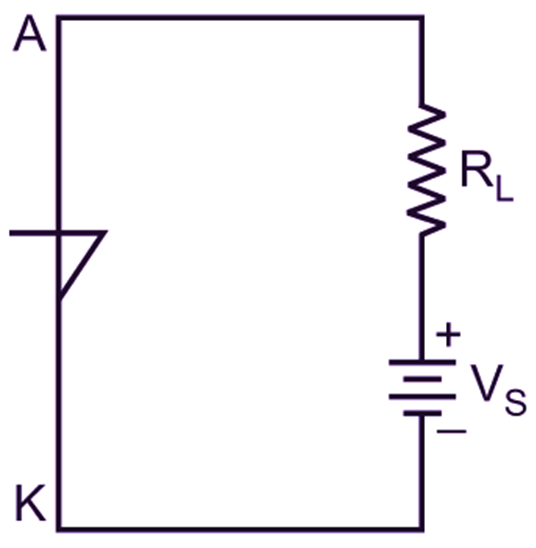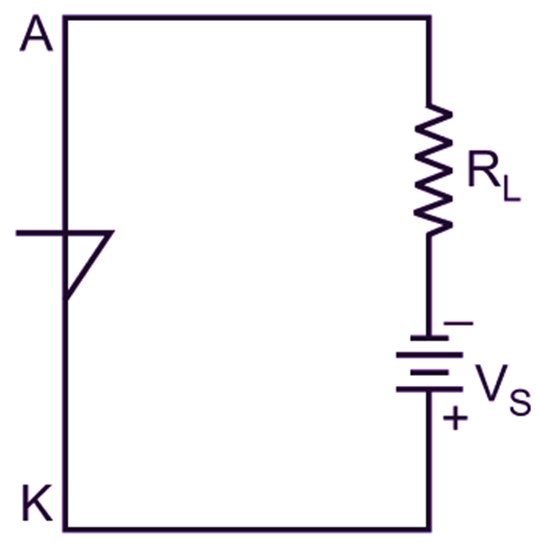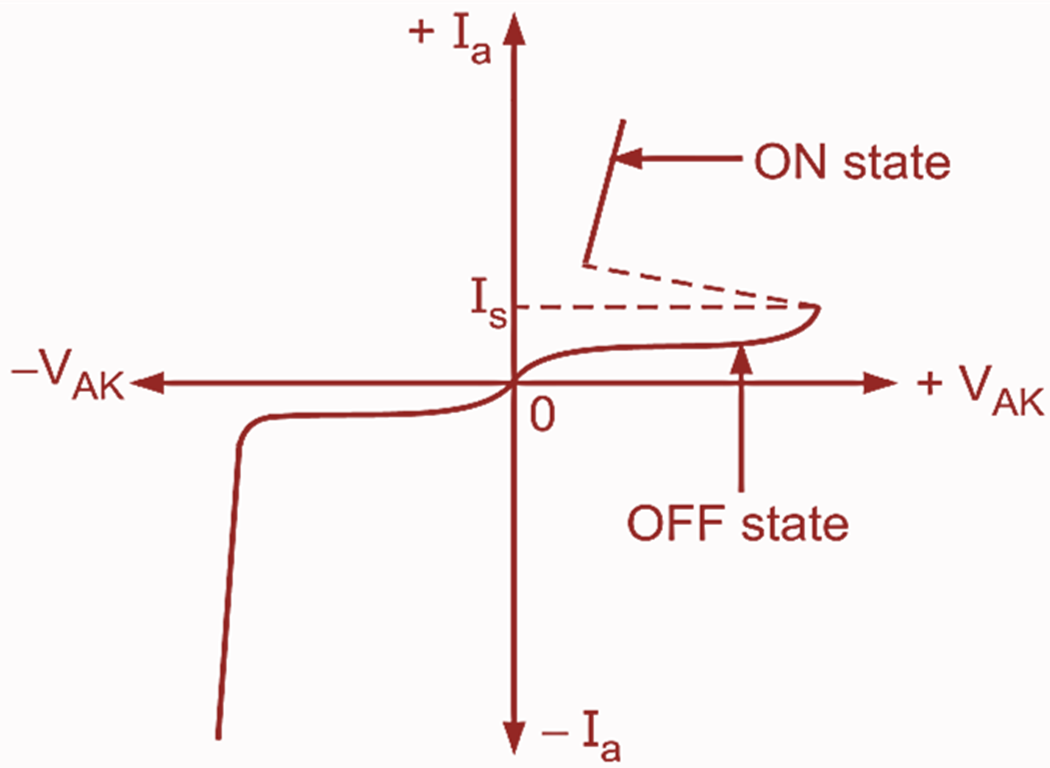The silicon unilateral switch is abbreviated as SUS. Basically, SUS is a unilateral four layer silicon diode with two electrodes. It is a member of thyristor family. It is available with the forward current rating of about 200 mA and reverse voilage rating of about 30V and the switching voltage rating of about 6 to 10 V
Construction of Silicon Unilateral Switch
The basic structure of a SUS is shown in Fig. 1 (a). It resembles the SCR in construction in which the contacts are made only to anode A and cathode K. Thus SUS has only two electrodes, namely anode A and cathode K. Fig. 1 (b) shows the schematic symbol of SUS.
![]()
(a) Structure
![]()
(b) Symbol
![]()
(c) Equivalent circuit
Fig. 1: Constrtwlion of SUS
The SUS is like a PUT but with an internally built low voltage avalanche diode between gate and cathode. Fig. 1 (c) shows the equivalent circuit of SUS. The addition of avalanche diode in SUS makes it turn-ON for a fixed anode gate voltage.
Principle of Operation of Silicon Unilateral Switch
The operation of a SUS is similar to that of SCR having no gate current. The SUS is said to be forward biased when the anode A is positive with respect to cathode K (Fig. 2 (a)). When the applied voltage VS is below the switching voltage about 6 to 10 V, the SUS will not conduct the current from anode to cathode. If the applied voltage VS equals or exceeds the switching voltage, then the SUS will conduct the current from anode to cathode, The SUS is said to be in forward ON state.

(a)

(b)
Fig. 2: Operation of SUS
When the SUS is turned ON, the anode current increases suddenly, but the voltage VAK drops across it to about 1.5 V. When the SUS is reverse biased, it will not conduct the current and remains in OFF state (Fig. 2 (b)). The SUS can be turned OFF from its ON state by reversing the anode voltage or disconnecting the supply VS. The holding current ranges from about 0.5 to 1.5 mA.
V-I Characteristics of Silicon Unilateral Switch
The V-l characteristic oía SUS is as shown in Fig. 3. At breakover (switching) voltage VS, the SUS conducts the anode current and turns ON. At this switching, the anode current increases hut voltage drops across it. The SUS is in ON state when it is forward biased and it is in OFF state when it is reverse biased.

Fig. 3: V-I characteristic of SUS
The switching current IS is much higher in SUS than that of UJT and it is very close to its holding current. So the upper and lower limits of frequency of time delay in SUS is restricted. For synchronization, lock out or for forced switching, bias or pulse signals may be applied at the gate terminal of SUS.
Applications of Silicon Unilateral Switch
Some of the applications of SUS are as given below:
- It is used for triggering of SCRs and TRIACs.
- It can be used as a relaxation oscillator where it switches at a fixed voltage determined by its internal avalanche diode (rather than a fraction η of another voltage in UJT).
- It can be used as a switch.